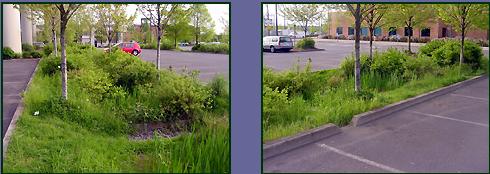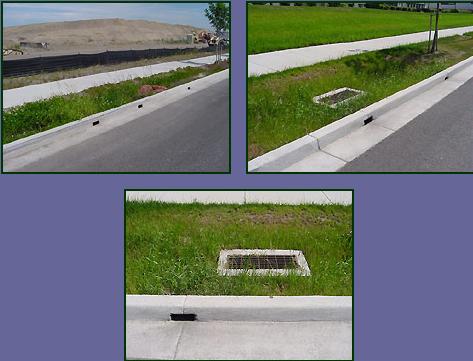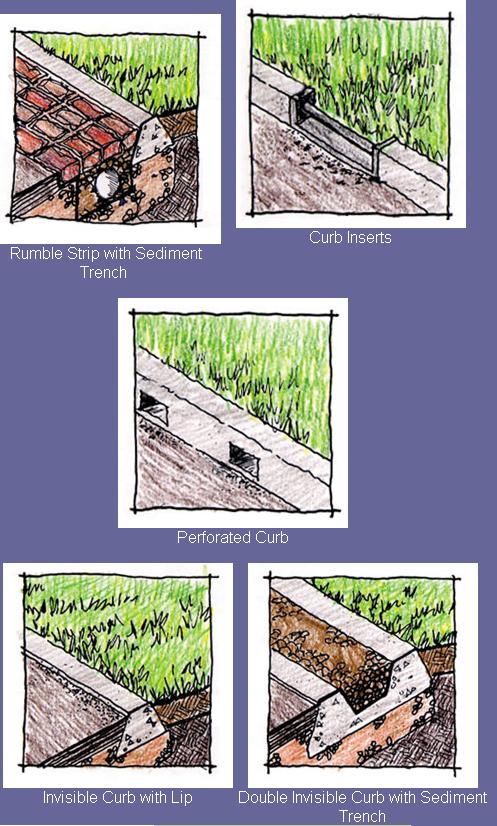|
Forest Hill Road |
|
Macon, Ga Grassy
Swales |
|
Forest Hill Road |
|
Macon, Ga Grassy
Swales |
|
Grassy Swales
Picture of a parking lot where a series of vegetated swales capture stormwater runoff from the parking lot. These densely vegetated swales incorporate a variety of trees, grasses, and shrubs. Small check dams slow and spread the flow. Cuts in the curbs allow stormwater to enter the swales. - http://www.lcrep.org/fieldguide/examples/swale.htm  |
|
What is a grassy drainage swale?
Swales are grassy depressions in the ground designed to collect stormwater runoff from streets, driveways, rooftops and parking lots. The grass in the swale removes pollutants from stormwater as the water infiltrates into the soil. The treated water recharges groundwater supplies including the Spokane Valley - Rathdrum Prairie Aquifer. The Aquifer is the sole source of drinking water for the greater Spokane and Coeur d’Alene metropolitan areas. http://www.spokanecounty.org/utilities/stormwtr/data/sw-2.pdf |
| Developers
Must Curb Runoff, Board Says Pollution: Water panel imposes strict guidelines on new buildings, malls, gas stations and homes. In a sweeping effort to prevent Los Angeles County beaches from becoming more polluted as population grows, the region's water quality board Wednesday approved standards to require new building projects across the county to limit urban runoff that fouls ocean waters.. . . Each project must collect or filter runoff from the first three-quarters of an inch of rain that falls in a 24 hour period. Developers will have a range of options to comply. One option is to plant grassy swales so runoff can seep into the ground instead of flowing into storm drains. http://www.drainpac.com/LATimestext.htm This shows picture of combination of "perforated" CURBS and SWALES and sidewalks-   http://www.lcrep.org/fieldguide/examples/curbalternatives.htm
Water quality of
highway runoff in the Austin, Texas area was determined by monitoring runoff at three
locations . . .
The
effectiveness of grassy swales
for treating highway runoff was evaluated by comparing the runoff at
one of the sites, before and after passing across a swale. The grassy
swale proved effective for reducing the concentrations of most
constituents in runoff. The low runoff coefficient due to infiltration
of runoff into the swale produced a large reduction (90%) in
pollutant load discharged.
This reduction of runoff volume effectively reduces the impact of
constituents whose concentrations are not reduced by the swale.
http://www.crwr.utexas.edu/reports/1995/rpt95-10.shtml |
|
|
|
- CAUTION Macon - |